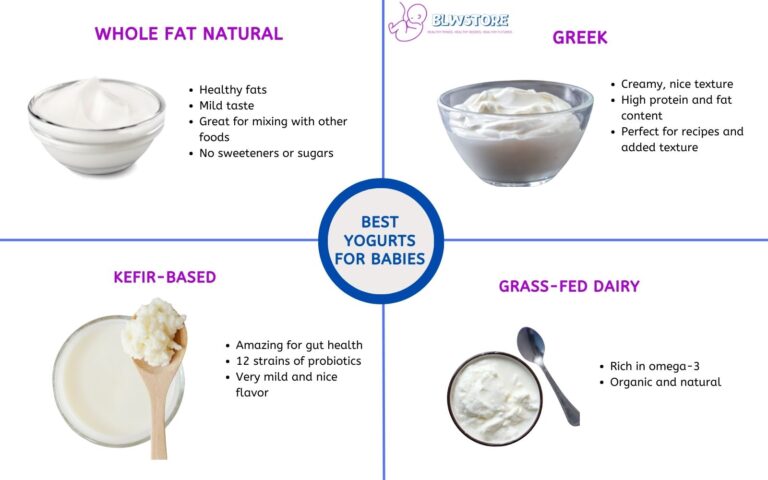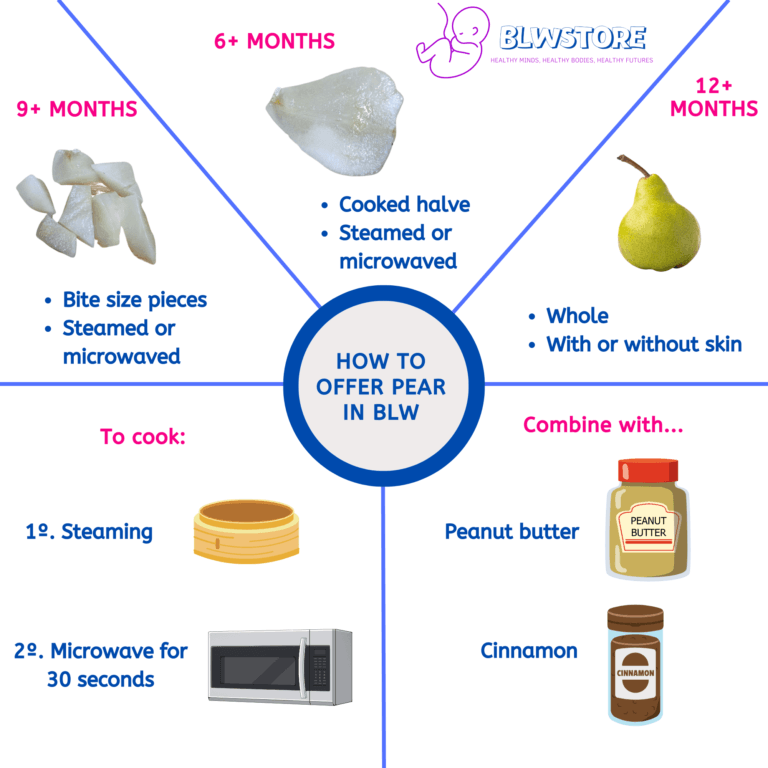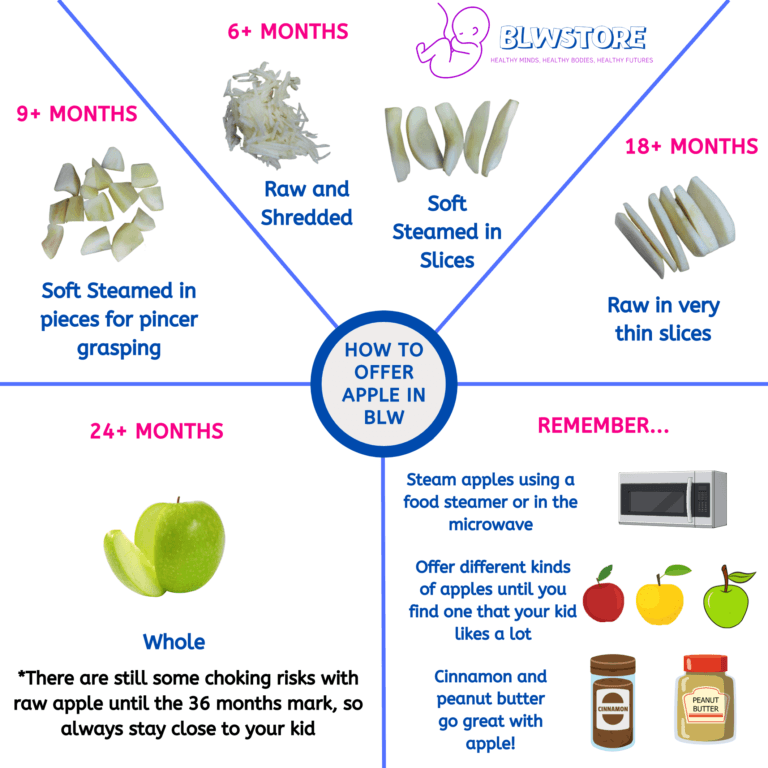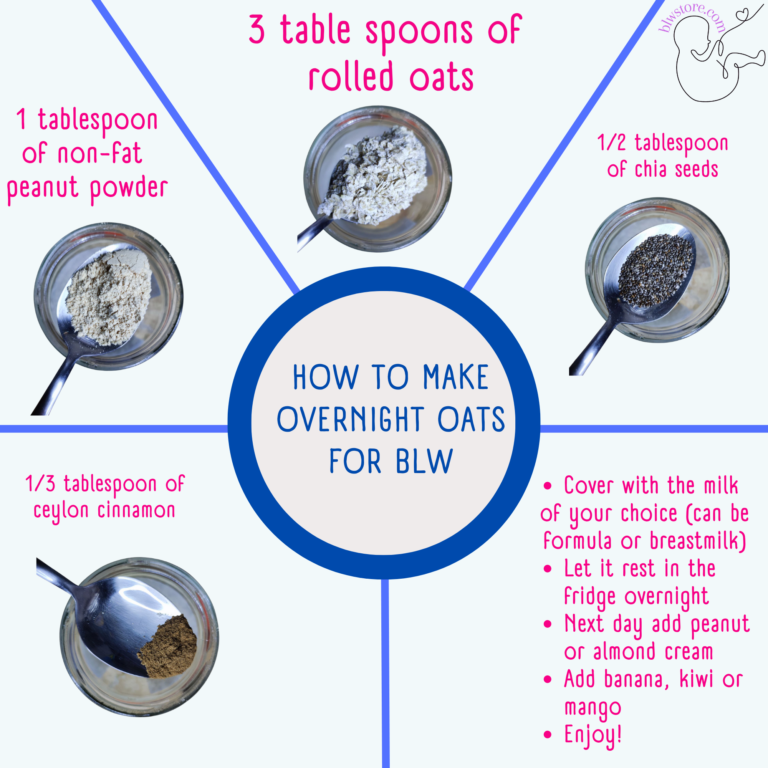
Deciding what and how to feed your baby is an important milestone. As a parent, you want to ensure that your little one receives all the necessary nutrients from healthy foods.
That’s why many parents opt for Baby-Led Weaning, which allows babies to self-feed and explore solid foods at their own pace.
However, sometimes babies can be picky eaters or refuse certain foods altogether, causing feeding difficulties for parents.
In this blog post, we’ll cover some useful tips on what to do when your baby is not eating during mealtime.
So if you’re struggling with feeding difficulties or have a fussy eater at home, keep reading!
6 Tips to Encourage your Baby to Eat
Step Tip 1 Be patient and offer soft foods during teething, such as mashed fruits or veggies, yogurt, or pureed meats. 2 Offer a variety of foods with different flavors and textures to encourage the baby to eat. 3 Allow self-feeding and exploration to promote independence and build confidence. 4 Make mealtime fun and stress-free by creating a positive environment with minimal distractions. 5 Establish a routine and avoid offering snacks or drinks outside of mealtime. 6 Consult with a pediatrician or feeding therapist if needed for further evaluation and guidance.
What is Baby-Led Weaning?
Baby-led weaning is a feeding approach that allows babies to self-feed solid foods as soon as they are developmentally ready, typically around 6 months of age.
The basic principle behind this method is to let the baby decide what and how much to eat, while parents provide nutritious food options and a safe eating environment.
This approach advocates for offering finger foods in appropriate sizes and textures rather than purees or spoon-feeding.
It encourages the baby to explore different types of foods through their senses, learning about flavors, colors, smells, and textures.
Baby-led weaning also promotes family meals where everyone can eat together in a relaxed atmosphere without pressure or distraction.
5 Factors That May Affect Baby’s Eating
Teething, food aversions or preferences, and developmental stages are just a few factors that may affect your baby’s appetite during the baby-led weaning process.
However, don’t let these challenges discourage you from offering a variety of nutritious foods to meet your little one’s nutritional needs.
1. Teething Issues

Teething is a natural process that occurs as your baby’s first teeth start to emerge.
It can be uncomfortable for babies, and this discomfort may affect their appetite and eating habits.
What to Do
Be patient and understanding of your baby’s needs.
Offer soft foods that are easy to chew or suck on, such as mashed fruits or veggies, yogurt, or pureed meats.
It’s also helpful to offer teething toys or cold washcloths for your baby to gnaw on between meals.
This can help soothe sore gums while keeping them engaged during mealtime.
Be sure to consult with your pediatrician if you have any concerns about your baby’s feeding habits during teething.
2. Food Aversions Or Preferences
Food aversions or preferences can commonly cause feeding difficulties in babies.
Some babies may dislike certain textures, flavors, or colors of foods and refuse to try them.
Others may prefer sweet or salty foods over healthy ones.
You need to understand that these preferences are typical and may change as your child’s taste buds develop.
What to Do
You can help encourage your baby to eat by offering a variety of foods with different flavors and textures.
Be a role model and try the same foods in front of your baby.
Never force your child to eat something they don’t like, as this can create negative associations with mealtimes.
Be patient and consistent. Keep offering lots of different types of textures and colors and your baby will get better with time.
3. Developmental Stages
Understanding your baby’s developmental stages is critical to their eating habits during the baby-led weaning process.
At around six months old, babies start showing an interest in solid foods and are ready to begin self-feeding with finger foods.
As they grow older, their motor skills develop, allowing them to handle more challenging textures and utensils.
We had some problems with picky eating with Pablo.
Everything started great, and suddenly, when he turned two years old, he started eating much slower.
It felt like a setback, but everything went back to normal with patience and without force-feeding.
4. Medical Conditions
Some medical conditions could impact your baby’s appetite and eating habits.
For example, reflux, colic, or food allergies can cause discomfort and pain during feeding time.
If you suspect that your baby may be struggling with a medical condition, it is crucial to consult with a pediatrician for proper diagnosis and treatment.
5 Tips For Encouraging Your Baby To Eat
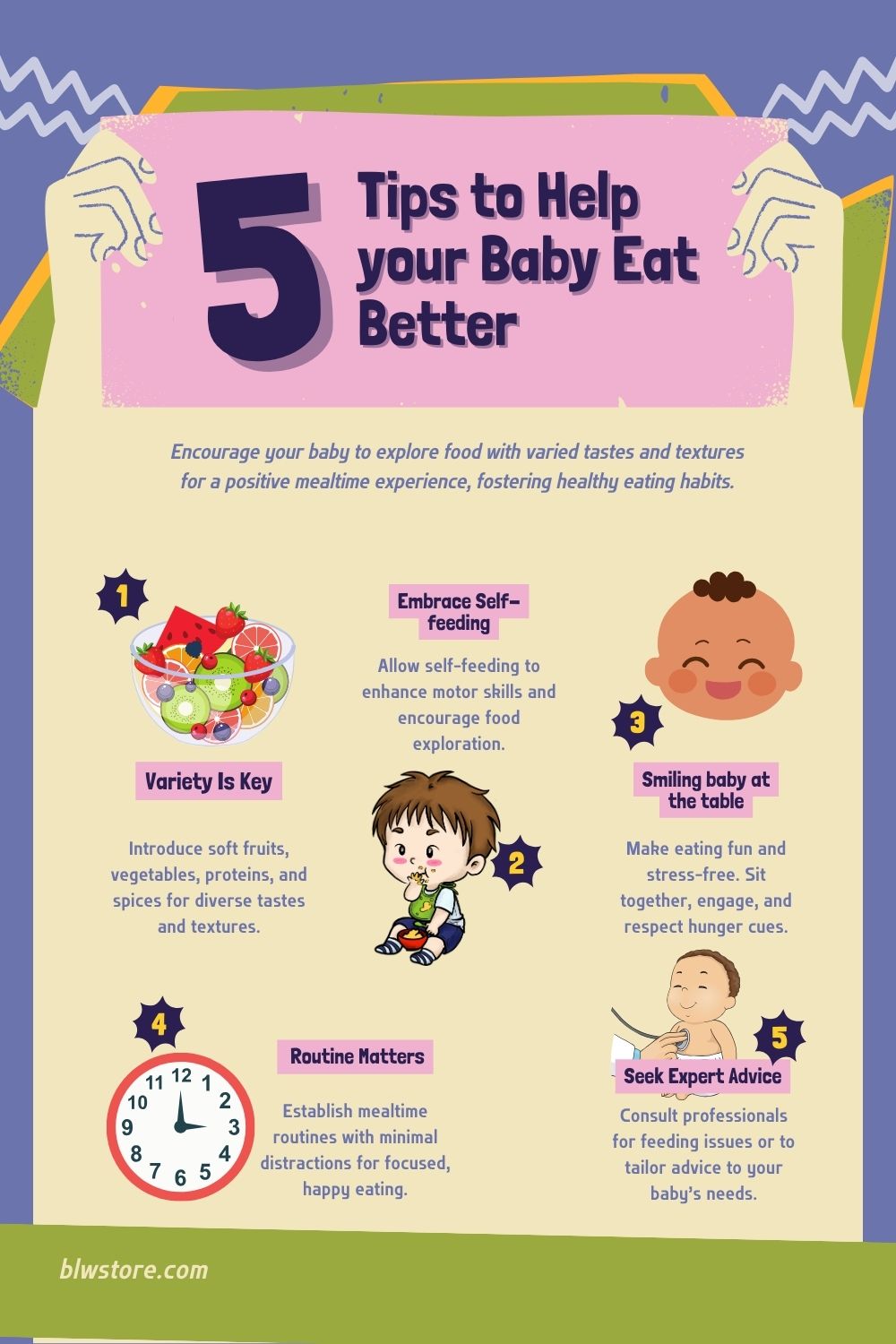
1. Offer A Variety Of Foods, Textures, And Flavors
When it comes to baby-led weaning, offering a variety of foods, textures, and flavors is key.
By exposing your child to different tastes and textures early on, you can help them develop healthy eating habits that will last a lifetime.
This can include everything from soft fruits and vegetables to lean proteins like chicken or tofu.
Plus, incorporating herbs and spices into your little one’s meals can introduce them to new flavors in a fun and exciting way.
It’s also important to keep in mind that your baby may need some time to get used to certain foods or textures.
Don’t be discouraged if they refuse something the first few times it’s offered – try again at another mealtime or reintroduce it in a different form (such as pureed).
Above all else, trust your instincts as a parent when it comes to what foods are appropriate for your child at each stage of their development.
Remember: every baby is unique!
2. Allow Self-feeding And Exploration

Allowing your baby to self-feed and explore can be an important aspect of Baby-Led Weaning.
By allowing them to grab, play with, and taste their food, they are developing fine motor skills and sensory experiences that may help in later life.
Encouraging this type of exploration can also make your child more willing to try new foods.
However, it is important to remember that self-feeding does come with some risks as young children can choke on certain types of food or have difficulty swallowing.
Make sure you are always present when your child is eating and cut any potential choking hazards into small pieces.
By allowing self-feeding and exploration during mealtime you are promoting independence, and building confidence while helping develop critical skills needed for future development
3. Make Mealtime Fun And Stress-free
When it comes to baby-led weaning, mealtime should be both fun and stress-free for your little one.
Try to create a positive environment by sitting down with your child, making eye contact, and engaging in conversation.
Encourage self-feeding and exploration by offering finger foods that are easy for them to grasp.
We can’t express enough how important this is: have breakfast, lunch, dinner, or even snacks at the same time as your child, and you will see how everything improves.
Additionally, make sure that you’re not forcing your child to eat or clean their plate if they don’t want to.
This can lead to negative associations with food and mealtime struggles down the road.
Instead, allow your child’s hunger cues to guide their intake and offer a variety of healthy options at each meal.
Remember that every child is different, so what works for one may not work for another.
If you’re struggling with picky eating or feeding difficulties, consider consulting with a pediatrician or feeding therapist who can provide practical advice tailored specifically to your child’s needs.
4. Establish A Routine And Avoid Distractions
Establishing a routine and minimizing distractions during mealtime can greatly help your baby to eat better.
Try to create a calm environment with minimal noise and NO screen time, and sit down together as a family for meals whenever possible.
This can help your child focus on the food and their hunger cues, leading to healthier eating habits.
We usually put some background calm music and that’s about it.
It’s also important to have consistency with feeding times and avoid offering snacks or drinks outside of mealtime.
This can disrupt your baby’s natural appetite rhythm and make them less interested in trying new foods.
By sticking to a regular schedule, you can help your child learn when it’s time to eat and establish healthy expectations around mealtimes.
5. Consult With A Pediatrician Or Feeding Therapist If Needed
It’s not uncommon for babies to experience feeding difficulties during their transition to solid foods.
If your baby is refusing food or experiencing appetite loss, it may be time to consult with a pediatrician or feeding therapist.
These professionals can assess your baby’s oral development and any underlying medical issues that could affect their eating ability.
A consultation with a pediatrician or feeding therapist can also provide valuable advice on meal planning and introducing new foods.
They may suggest strategies such as finger foods or changing mealtime routines that better suit your child’s needs.
How can I ensure that my child is getting enough nutrition despite not yet eating well on solids?
Keep offering formula or breast milk on demand.
Make purees or mix mashed nutrient-dense foods like avocado, sweet potatoes, or banana with formula and breastmilk.
If nothing works and weight gain becomes an issue, find help. Some pediatricians may recommend supplementation through powders.
We’re Maria and Alberto, a married couple and educators who are nutrition enthusiasts. Even before we had kids, we were already crazy about nutrition.
We’d read scientific articles, watch videos from nutritionists, and spend hours listening to nutrition podcasts.
Today, we continue doing this, but in a different way, as we’ve learned to sift through the noise and trends. Nutrition, like any other field of knowledge, the more you read and learn, the more you develop a comprehensive understanding of reality, and that’s what has happened to us.
Before having our first child, we focused on learning everything we could about child nutrition, using the same techniques we had already employed, backed by our extensive knowledge in nutrition.
Our mission is to help other parents with their children’s nutrition, to help them become the best versions of themselves.
If we are what we eat and drink, which is absolutely true, let’s do it right!


